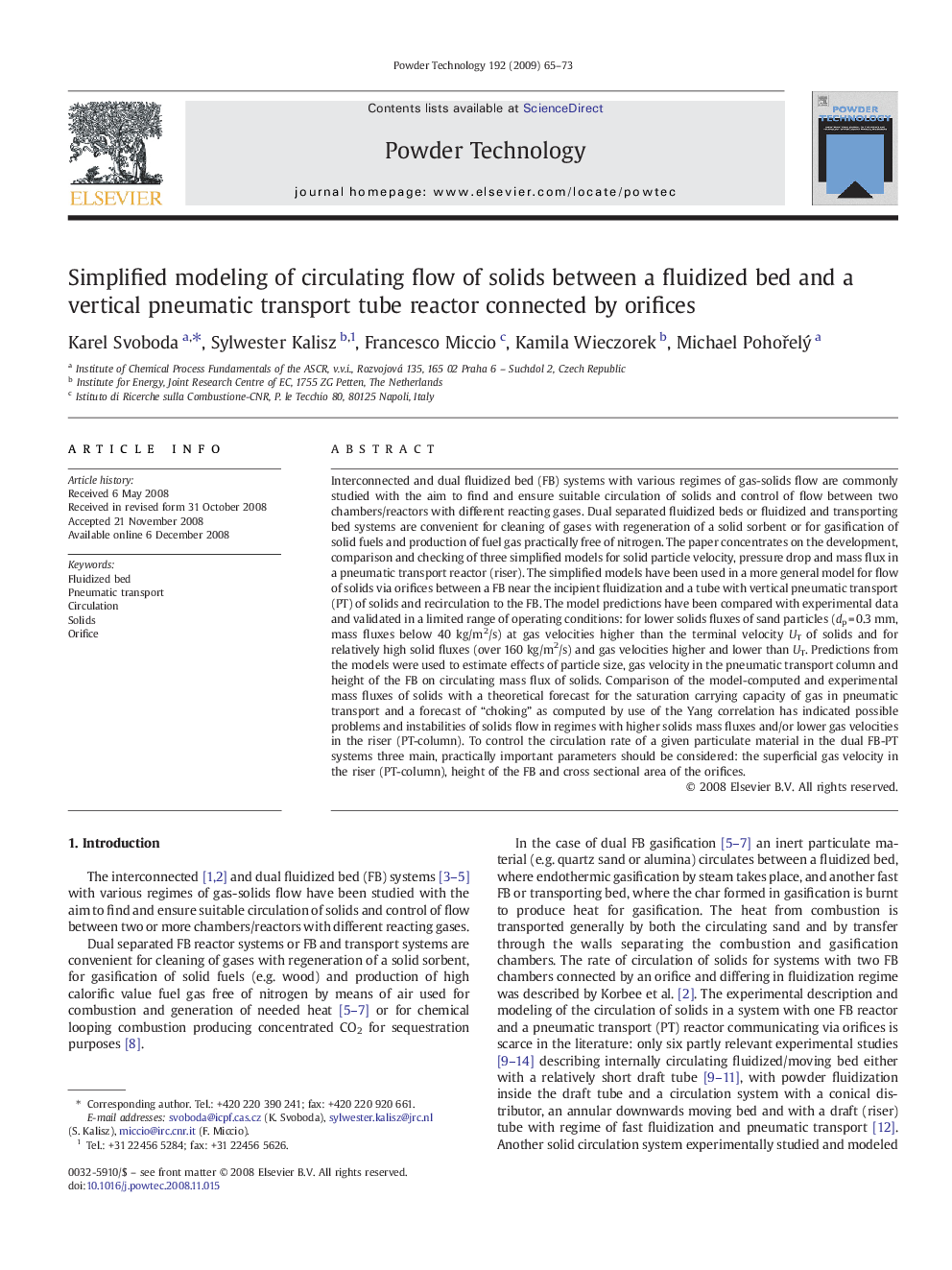| کد مقاله | کد نشریه | سال انتشار | مقاله انگلیسی | نسخه تمام متن |
|---|---|---|---|---|
| 238600 | 465764 | 2009 | 9 صفحه PDF | دانلود رایگان |

Interconnected and dual fluidized bed (FB) systems with various regimes of gas-solids flow are commonly studied with the aim to find and ensure suitable circulation of solids and control of flow between two chambers/reactors with different reacting gases. Dual separated fluidized beds or fluidized and transporting bed systems are convenient for cleaning of gases with regeneration of a solid sorbent or for gasification of solid fuels and production of fuel gas practically free of nitrogen. The paper concentrates on the development, comparison and checking of three simplified models for solid particle velocity, pressure drop and mass flux in a pneumatic transport reactor (riser). The simplified models have been used in a more general model for flow of solids via orifices between a FB near the incipient fluidization and a tube with vertical pneumatic transport (PT) of solids and recirculation to the FB. The model predictions have been compared with experimental data and validated in a limited range of operating conditions: for lower solids fluxes of sand particles (dp = 0.3 mm, mass fluxes below 40 kg/m2/s) at gas velocities higher than the terminal velocity UT of solids and for relatively high solid fluxes (over 160 kg/m2/s) and gas velocities higher and lower than UT. Predictions from the models were used to estimate effects of particle size, gas velocity in the pneumatic transport column and height of the FB on circulating mass flux of solids. Comparison of the model-computed and experimental mass fluxes of solids with a theoretical forecast for the saturation carrying capacity of gas in pneumatic transport and a forecast of “choking” as computed by use of the Yang correlation has indicated possible problems and instabilities of solids flow in regimes with higher solids mass fluxes and/or lower gas velocities in the riser (PT-column). To control the circulation rate of a given particulate material in the dual FB-PT systems three main, practically important parameters should be considered: the superficial gas velocity in the riser (PT-column), height of the FB and cross sectional area of the orifices.
Three simplified models for solid particle velocity, pressure drop and mass flux in a pneumatic transport (PT) reactor (riser) have been used in a more general model for flow of solids via orifices between a fluidized bed (FB) near the incipient fluidization and a tube with vertical PT of solids and recirculation to the FB. The model predictions have been compared with experimental data and validated in a limited range of operating conditions: of lower and higher mass fluxes GPT of sand particles (below 40 kg/m2/s and over 150 kg/m2/s resp.).Figure optionsDownload as PowerPoint slide
Journal: Powder Technology - Volume 192, Issue 1, 15 May 2009, Pages 65–73